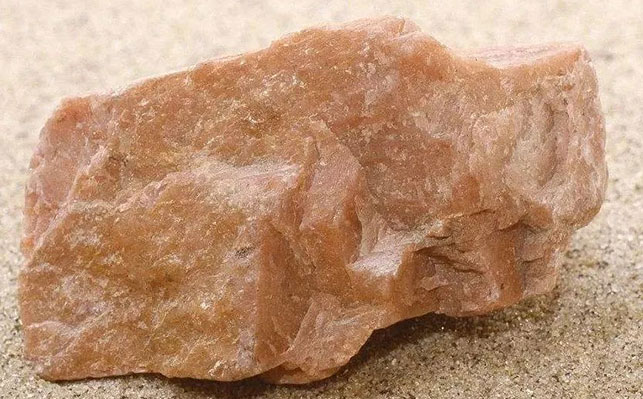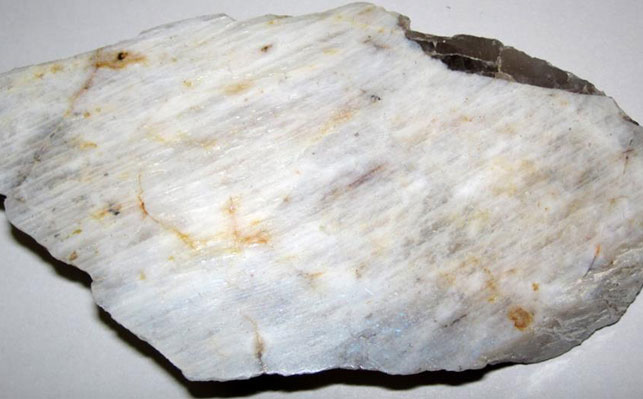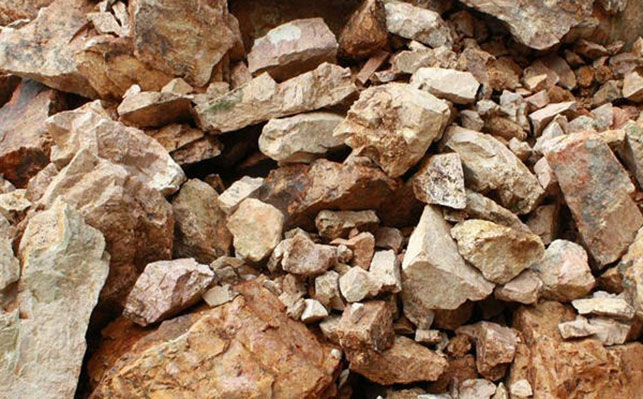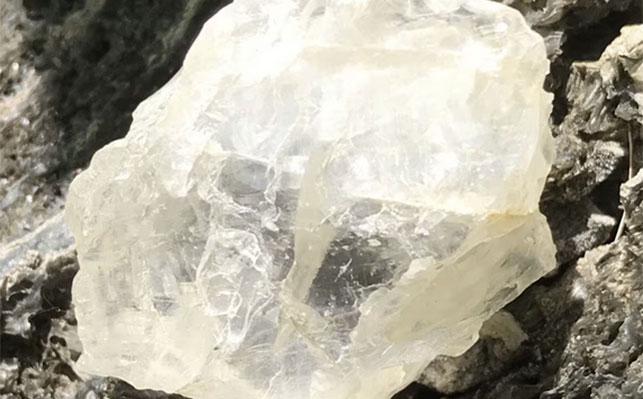
15311826613
Click to add WeChatFeldspar ore is a rock rich in aluminum silicate minerals such as potassium, sodium, and calcium. In addition to extracting feldspar, other valuable elements also have extraction value when the content is high. Extracting these minerals can provide important raw materials for agriculture, chemical industry, metallurgy, aerospace and other fields, and meet the development needs of related industries. The following article will introduce the extraction methods of these valuable elements in feldspar ore.
Potassium feldspar is one of the important sources of potassium. Potassium is a nutrient element necessary for plant growth. In agricultural production, potassium fertilizer is an important fertilizer. Extracting potassium from feldspar ore can be used to produce potassium fertilizer to meet the agricultural demand for potassium. In addition, potassium is also widely used in industrial fields such as glass, ceramics, and electronics. Commonly used extraction methods are acid method and alkali method.

Acid method for extracting potassium is to use acids such as sulfuric acid and hydrochloric acid to react with potassium feldspar, so that potassium enters the solution in the form of soluble potassium salts, thereby realizing the separation of potassium from other minerals. For example, sulfuric acid reacts with potassium feldspar to produce substances such as potassium sulfate and silicic acid. The process is to pre-treat potassium feldspar by crushing and grinding it to make its particle size reach a suitable range so that the acid leaching reaction can be fully carried out. Then the pre-treated potassium feldspar is mixed with an acid solution of a certain concentration in a reactor and reacted under appropriate temperature and stirring conditions. After the reaction is completed, the solution containing potassium ions is separated from the solid residue by filtering, washing and other operations. Finally, the solution is evaporated, concentrated, crystallized and other operations are performed to obtain potassium salt products.
Alkali extraction of potassium is to use strong alkalis such as potassium hydroxide and sodium hydroxide to react with potassium feldspar to convert potassium into soluble potassium salts. For example, potassium hydroxide reacts with potassium feldspar to produce potassium silicate, potassium aluminate and water. The process is to first crush the potassium feldspar to a certain fineness, mix it with alkali solution in a certain proportion, and then put it into a high-pressure reactor. The reaction is carried out under high temperature and high pressure conditions to fully convert the potassium in the potassium feldspar into soluble potassium salts. After the reaction is completed, the solid residue and the potassium-containing solution are separated through cooling, filtering and other steps. The solution is further treated, such as adjusting the pH value, removing impurities, etc., and then potassium salt products are obtained by evaporation and crystallization.
Albital feldspar contains rich sodium elements. Sodium and its compounds have important uses in chemical, metallurgical, textile, papermaking and other industries. For example, sodium hydroxide is an important chemical raw material, widely used in soap, detergent, papermaking, textile and other industries; sodium carbonate can be used in glass manufacturing, chemical production and other fields. Common extraction methods are acid leaching and high-temperature melting.

The acid leaching method for extracting sodium is similar to the acid method for extracting potassium. It uses acid to react with sodium feldspar to dissolve sodium in the solution in the form of sodium salt. For example, hydrochloric acid reacts with sodium feldspar to produce sodium chloride, silicic acid, etc.
The process is to crush and grind the sodium feldspar ore, add it to the acid solution for stirring and leaching. Control the reaction temperature, time and acid concentration and other conditions to fully dissolve the sodium. After the reaction is completed, filter to obtain a solution and residue containing sodium salt. The solution is purified to remove impurities, and then the sodium salt product is obtained by evaporation and crystallization.
The high-temperature melting method is to mix sodium feldspar with a certain flux (such as sodium carbonate, calcium carbonate, etc.) and then melt it at high temperature. During the melting process, the sodium in the sodium feldspar reacts chemically with the flux to form sodium salts that are easily soluble in water. For example, sodium feldspar reacts with sodium carbonate at high temperature to form sodium silicate, sodium aluminate and carbon dioxide.
The process is to first mix the sodium feldspar and the flux in a certain proportion, and then put them into a high-temperature furnace for melting. The melting temperature is usually above 1000℃, which is adjusted according to the specific reaction system and requirements. After the molten product is cooled, it is leached with water to dissolve the sodium salt into the solution. Filter to remove insoluble matter, evaporate and concentrate the solution, crystallize it, and obtain the sodium salt product.
The aluminum element in feldspar ore is also an important extraction object. Aluminum has the advantages of light weight, corrosion resistance, good electrical and thermal conductivity, and is widely used in many fields such as aerospace, automobile manufacturing, construction, and electronics. Extracting aluminum from feldspar ore can provide important raw materials for these industries. Commonly used aluminum extraction methods include the Bayer process and the acid process.

The Bayer process for aluminum extraction uses the hydrolysis and precipitation characteristics of sodium aluminate solution under different conditions to extract aluminum. The aluminum in the feldspar ore is converted into a sodium aluminate solution, and then the aluminum hydroxide in the sodium aluminate solution is precipitated by controlling the temperature, concentration, and addition of seed crystals, and then calcined to obtain alumina.
The process is to first crush and grind the feldspar ore, then mix it with a sodium hydroxide solution, and perform a dissolution reaction under high temperature and high pressure, so that the aluminum in the ore enters the solution in the form of sodium aluminate. The slurry after dissolution is diluted and filtered to remove the residue to obtain a sodium aluminate solution. Seed crystals are added to the sodium aluminate solution, and the temperature and stirring speed are controlled to gradually precipitate the aluminum hydroxide. After filtering and washing, the precipitate is calcined at high temperature and decomposed to obtain alumina.
The acid method for extracting aluminum is to dissolve the aluminum in the feldspar ore with acids such as sulfuric acid and hydrochloric acid to form an aluminum salt solution, and then obtain aluminum hydroxide through steps such as impurity removal and precipitation, and finally calcine to obtain alumina. For example, sulfuric acid reacts with aluminum in feldspar to form aluminum sulfate.
The process is to crush the feldspar ore and add it to the acid solution for leaching reaction, and control the reaction conditions to fully dissolve the aluminum. The leached solution is filtered and impurity-removed to remove impurities such as iron and calcium. Then a precipitant (such as ammonia water) is added to the solution to precipitate the aluminum in the form of aluminum hydroxide. After filtering and washing, the precipitate is calcined to obtain an alumina product.
In some feldspar ores, lithium exists in the form of minerals such as lithium mica, which is a potential source of lithium extraction. As an important rare metal, lithium plays a pivotal role in modern industry. To extract lithium from feldspar ore, chlorination roasting method, ion exchange method or sulfuric acid method is generally used.

The lithium extraction by chlorination roasting method is to mix the feldspar ore with a chlorinating agent and roast it at high temperature. During the process, lithium reacts with the chlorinating agent to generate corresponding chlorides, which can be volatilized during the roasting process and then collected by condensation and other methods.
The process is to first crush and grind the feldspar ore and mix it evenly with the chlorinating agent in a certain proportion. Then put the mixture into the roasting furnace for roasting. The gas containing rare metal chlorides generated in the process enters the condensation device through the pipeline, and the rare metal chlorides are cooled and condensed into solids, thereby separating from other substances.
The lithium extraction by ion exchange method uses the selective adsorption characteristics of ion exchange resin on lithium ions in the feldspar ore leachate to adsorb these rare metal ions from the solution onto the resin, and then elute the rare metal ions from the resin through desorption and other operations, thereby achieving the separation and enrichment of rare metals.
The process is to first treat the feldspar ore by acid leaching or alkaline leaching, so that the lithium in it enters the solution in the form of ions, and then pass the leached solution through an exchange column equipped with ion exchange resin, control the flow rate, pH value and other conditions of the solution, so that the rare metal ions react with the exchange groups on the resin and are adsorbed on the resin. When the resin is saturated with adsorption, the resin is eluted with a specific desorbent to desorb the rare metal ions from the resin to obtain a desorption solution rich in rare metal ions. The desorption solution is further concentrated, purified and treated to obtain rare metal compounds or metal elements.
Lithium extraction by sulfuric acid is a method of separating lithium from other minerals by using sulfuric acid to react chemically with lithium minerals in feldspar ore to dissolve lithium into the solution in the form of lithium sulfate.
The process is to first crush and grind the feldspar ore, then mix the ground ore with a certain concentration of sulfuric acid solution in an appropriate proportion, and allow the two to fully contact and react under heating conditions (about 150-250℃). Within this temperature range, the lithium in the feldspar ore reacts with sulfuric acid to produce water-soluble lithium sulfate.
The above is an introduction to some useful extraction methods from feldspar ore. In some specific feldspar ores, the content of these rare metals is relatively high and has certain extraction value.